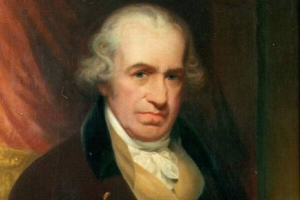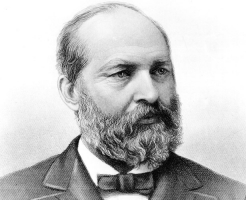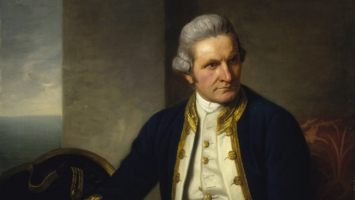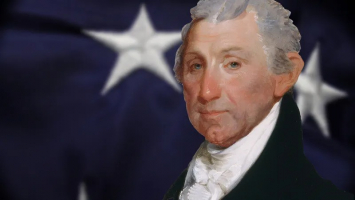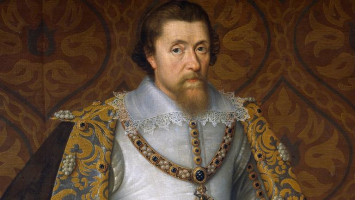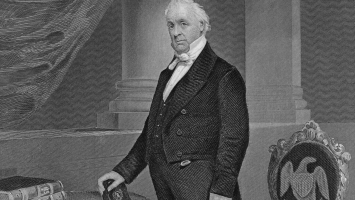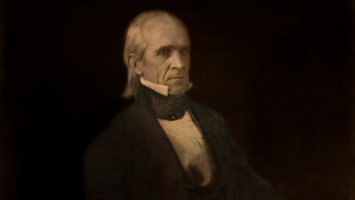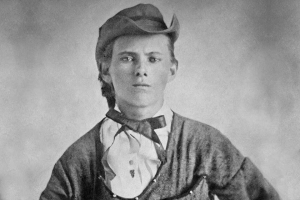Top 7 Interesting Facts about James Wolfe
One of the most significant British Army officers in history was James Wolfe. He was a key player in the Seven Year War, and his military strategy had a ... read more...significant impact on many subsequent conflicts. Let’s take a look at ten interesting facts about James Wolfe.
-
An English general named James Wolfe (1727–1759) commanded the British forces as they famously defeated the French at the Plains of Abraham outside of Quebec.
James Wolfe was born on January 2, 1727, in Westerhan, Kent, into a military family. At the age of 13, he volunteered to join his father's unit, and two years later, he was appointed to the regiment. Soon after, he became an ensign and joined the 12th Foot. He served as the battalion adjutant at the battle of Dettingen in 1743. He served as General "Hangman" Hawley's assistant and brigade major during the Jacobite uprising of 1745. Wolfe was granted command of the 20th Regiment at the age of 23 as a result of the Duke of Cumberland praising him for his contribution to the action at Lanfoldt. He took on the role of quartermaster general in the unsuccessful assault on Rochefort after being promoted to lieutenant colonel in 1750.
James Wolfe appeared set for a protracted military career. An intriguing tidbit about James Wolfe is that his father served in the military, and when he was 13 years old, Wolfe volunteered to join his father's first marine battalion. He would pick up a number of talents during this time that would be very helpful to him in the future.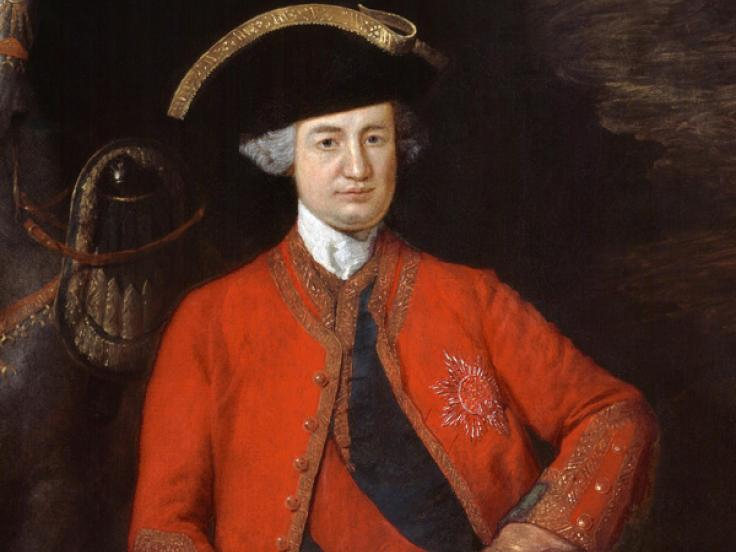
Photo: www.nam.ac.uk 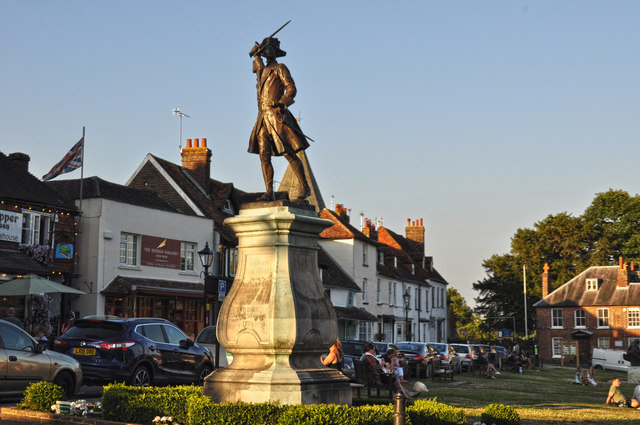
Photo: www.geograph.org.uk -
Major General James Wolfe of the British Army is most known for his training innovations and his 1759 victory against the French at the Battle of the Plains of Abraham in Quebec. He served extensively in Europe during the War of the Austrian Succession. Edward Wolfe, the great general's son, was a young man when he earned his first appointment.
The British Army swiftly adopted James Wolfe's military strategies and combat methods after his death, making his legacy one of the best in the history of the British Army. Wolfe's outstanding tactical strategy and strong leadership were acknowledged with his wins, particularly the one in Quebec. More generals later adopted these strategies, and new recruits to the army were instructed in how to fight, notably with a bayonet.
As a result of Wolfe's role in the capture of Quebec in 1759, Britain's triumph in the Seven Years' War and subsequent territorial expansion were forever associated with him. He was portrayed in the internationally renowned picture The Death of General Wolfe. Since the conquest of Quebec directly resulted in the conquest of Montreal, ending French authority of the colony, Wolfe was posthumously called "The Hero of Quebec," "The Conqueror of Quebec," as well as "The Conqueror of Canada."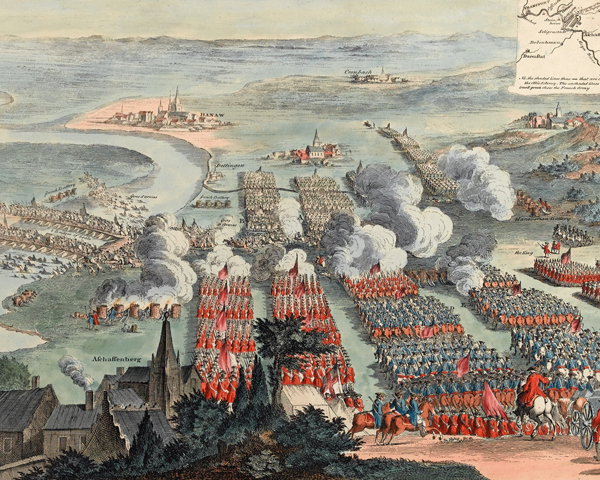
Photo: National Army Museum 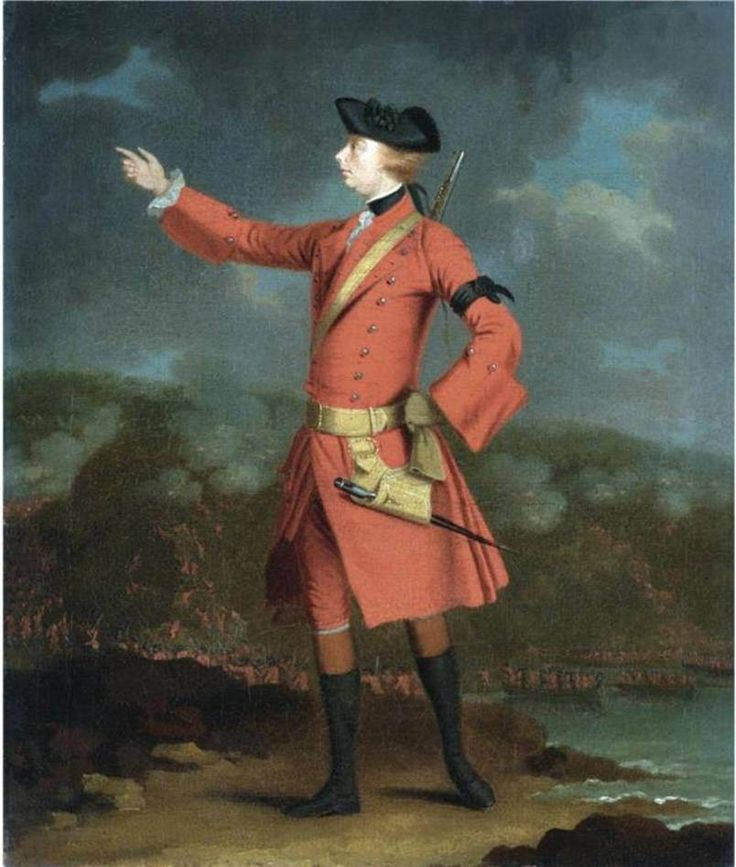
Photo: Pinterest -
James Wolfe was given the position of colonel by William Pitt the Elder after making an impression with his performances in various battles. A year after being appointed, his first responsibility would be to command the British forces into the city of Quebec. One of James Wolfe's most significant career decisions would be this promotion, and his performance in that battle would ultimately determine his legacy.
The most renowned military hero of the 18th century in Britain was Major-General James Wolfe, an army reformer who rose to high status at a young age. Following his defeat of the French at Quebec in 1759, Canada and the American colonies were united under the British throne. But because he passed away just after winning, he gained a martyrdom reputation among British patriots that was unparalleled until Nelson.
Amherst was supposed to travel north to seize Ticonderoga and Montreal as part of Pitt's plan to conquer Canada. Major-general Wolfe was granted a free-standing order to capture Quebec. With a total of 8,500 soldiers, the expedition set ship from Louisbourg on June 4, 1759, and by June 27, the army had disembarked and set up camp on Île d'Orléans across from Quebec. The French commander, the Marquis de Montcalm, was unable to be enticed out of the city despite a bombardment of Quebec by cannons on Pointe de Levis and raiding expeditions through the countryside. A British assault on Beauport on July 31 was repulsed due to robust French defenses and an unexpected storm.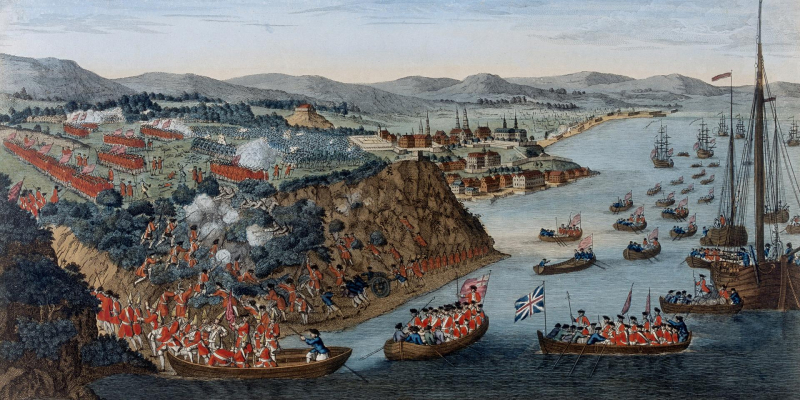
Photo: www.nam.ac.uk Video: Bruno Lima -
James Wolfe first experienced combat at the Battle of Dettingen in 1743, after missing a few battles due to illness. The battle was fought in Dettingen, a city in the state of Bavaria. James II oversaw the allied forces, and the battle isn't thought to have had much of an impact.
The battle, however, saw a particularly impressive performance from Wolfe's battalion. While Wolfe was riding, his horse was shot and killed, and during the war, his unit suffered more attacks than any other.
The battle ended in victory for the allies, and people in positions of authority were impressed by Wolfe's regiment's conduct. During the Battle of Dettingen in the German theater of the War of the Austrian Succession, Wolfe experienced his first combat encounter. King George II commanded the British forces, and it is noteworthy for being the final conflict in British history to be commanded by a reigning monarch. In spite of being shot out from under him, Wolfe displayed extraordinary bravery and composure under fire. George II's son, the Duke of Cumberland, took note and elevated him to the captain of the 45th Regiment of Foot.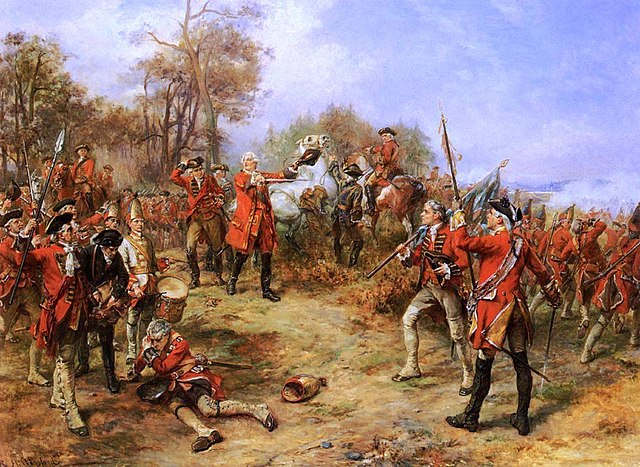
Photo: wikipedia Video: rewboss -
James Wolfe quickly rose through the ranks of the army, and his remarkable leadership abilities were a major factor in this. Although Wolfe is supposed to have had high expectations for his soldiers, he is also said to have lived up to them. When the Seven Years' War broke out in 1756, Wolfe had a new opportunity to grow. William Pitt gave him the position of second-in-command of an expedition to seize the Fortress of Louisbourg as a result of his involvement in the failed raid on Rochefort in 1757. He was appointed captain of a force that successfully besieged Louisbourg before sailing up the Saint Lawrence River to seize Quebec City. Following a protracted siege, Wolfe's victory over a French force led by the Marquis de Montcalm allowed British forces to take control of the city. At the height of the Battle of the Plains of Abraham, Wolfe died from wounds caused by three balls.
An interesting fact about James Wolfe is that he would travel with the same gear as his soldiers and didn't demand special treatment, in contrast to many other military commanders of the era. He gained the support of his men because of this attitude, which was also essential to his triumphs. He was infamously severe about discipline and thought that leaving one's job should result in death.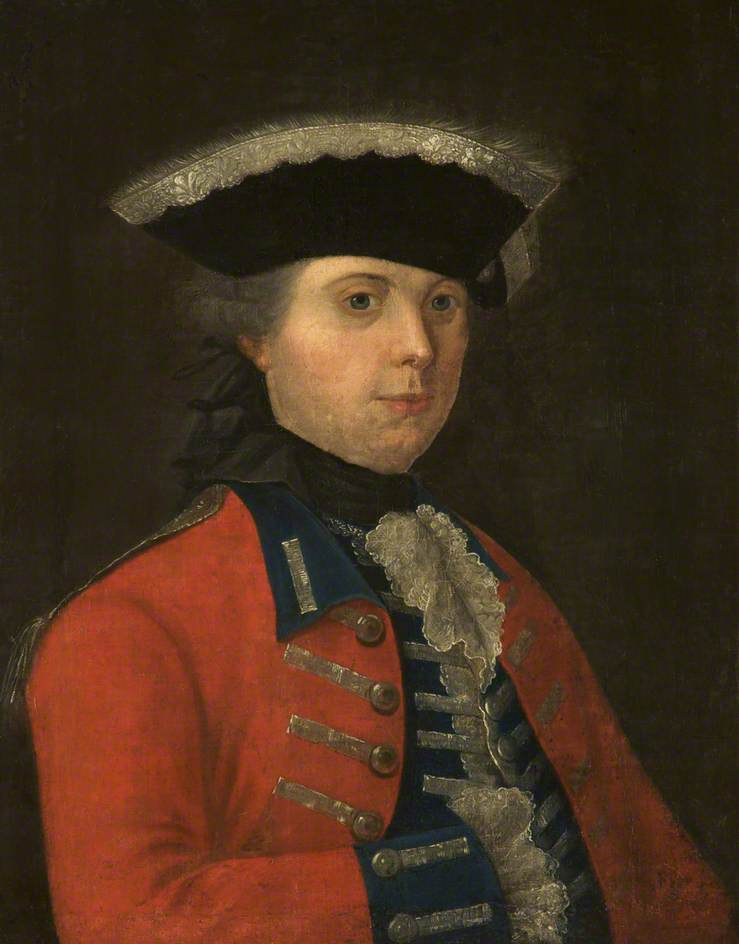
Photo: artuk.org Video: David Langin -
James Wolfe's greatest accomplishment was the battle of Quebec, which cemented his status as a hero and an icon in Britain. Throughout his brief life, Wolfe experienced periods of poor health, and comments in his diary indicate that he was not feeling well prior to the Battle of Quebec.
In one section, in particular, Wolfe mentioned that he had rheumatism and a bladder infection. James Wolfe also stated that he would prefer to pass away than be unable to serve his country, which is an interesting fact about James Wolfe.
Many people believed the operation would fail after Wolfe suffered from months of frustration and terrible health. Then, on September 13, Wolfe led his men in carrying out a risky plan at the crack of dawn. He transported his 4,500 soldiers up the St. Lawrence River in a flat-bottomed landing boat before landing them southwest of the city. They then ascended the Heights of Abraham to surprise the French, lure them away from Quebec, and force them into the exact location of Wolfe's planned engagement. It was a risky strategy that depended on both excellent judgment and chance, yet it succeeded.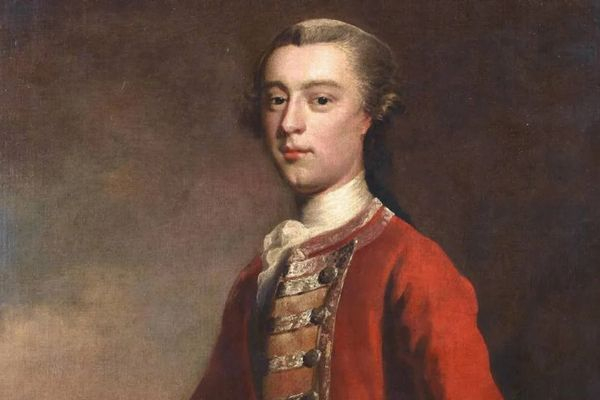
Photo: www.theglobeandmail.com Video: NationalArmyMuseumUK -
The Battle of Quebec, sometimes referred to as the Battle of the Plains of Abraham, took place on September 13, 1759, as shown in The Death of General Wolfe. The destiny of France's possessions in North America was decided by this crucial moment in the Seven Years' War. General Wolfe became a national hero after his passing. In the British Empire, he came to symbolize Great Britain's victory in the Seven Years' War. At its debut exhibition in London, there were lines out the door to see this picture.
An interesting fact about James Wolfe is that his valiant death propelled him into the ranks of British military history legends. The picture "The Death of General Wolfe" by the Anglo-American artist Benjamin West is the most well-known tribute to him, despite the fact that there have been numerous monuments and statues built to remember him.
Benjamin West, an Anglo-American painter, created The Death of General Wolfe in 1770 to honor General James Wolfe, who died at the conclusion of the Battle of Quebec in 1759. A traditional guideline of historical portraiture was broken by the painting, which vividly suggested martyrdom and featured people wearing contemporary clothing who had not been there at the occasion. One of the most well-known representations of 18th-century art is painting. Wolfe is portrayed in the artwork as a figure resembling Christ, dying in the arms of multiple people, and the scene depicts his death at the Battle of Quebec. One of the most well-known works of British art is presently on display at the Natural Gallery of Canada.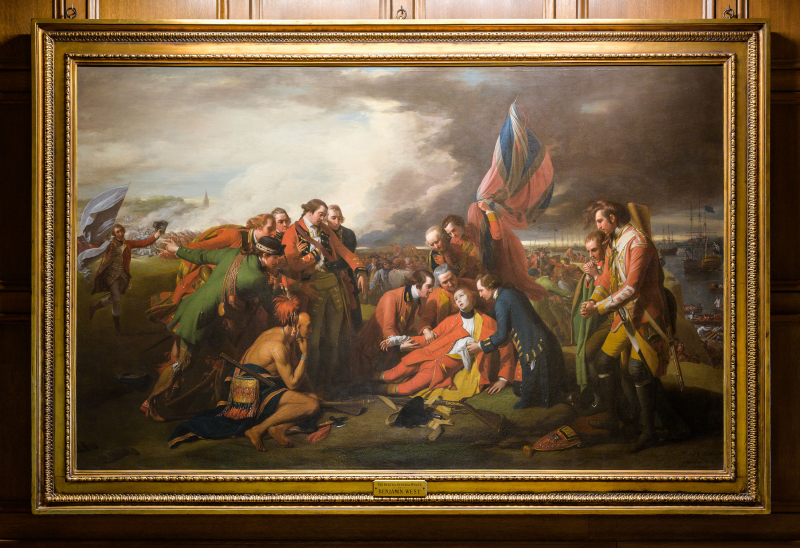
Photo: arts.umich.edu Video: Ladykflo









